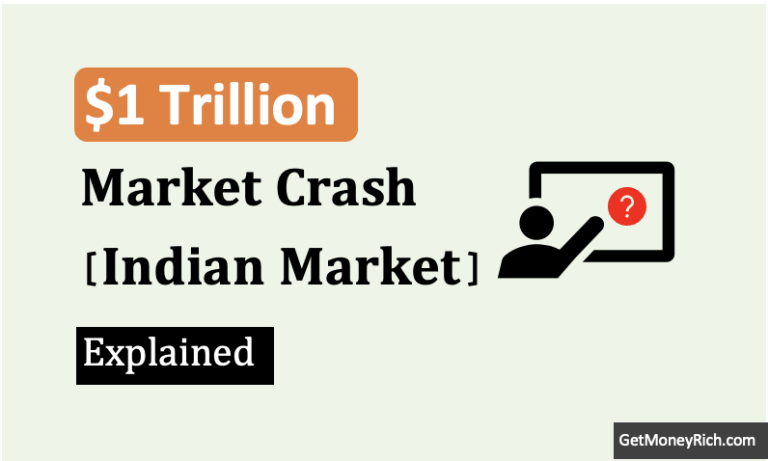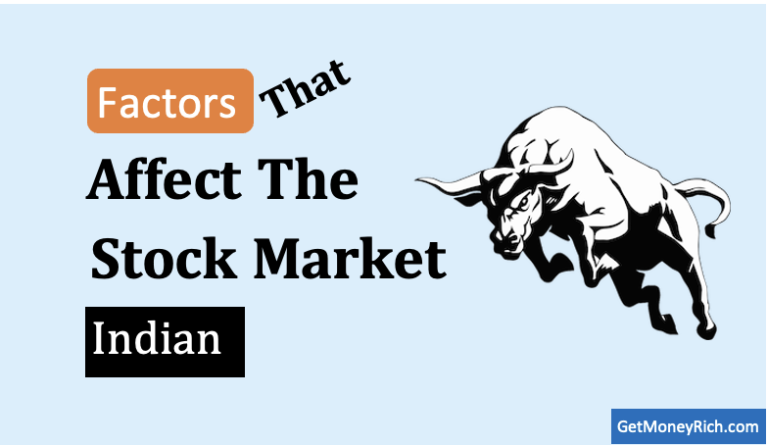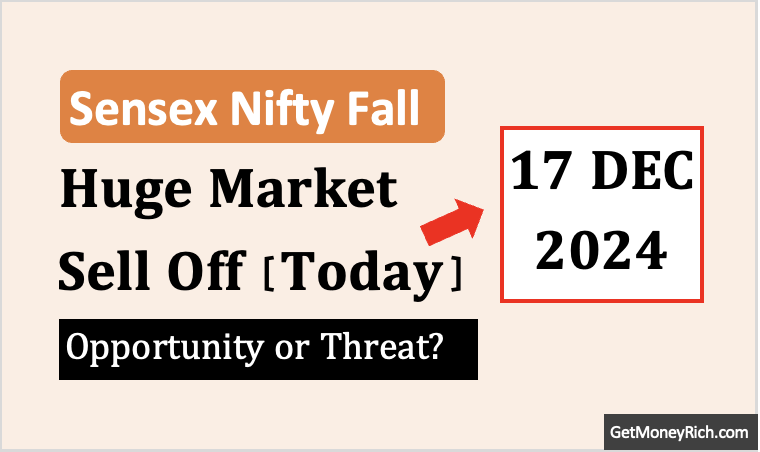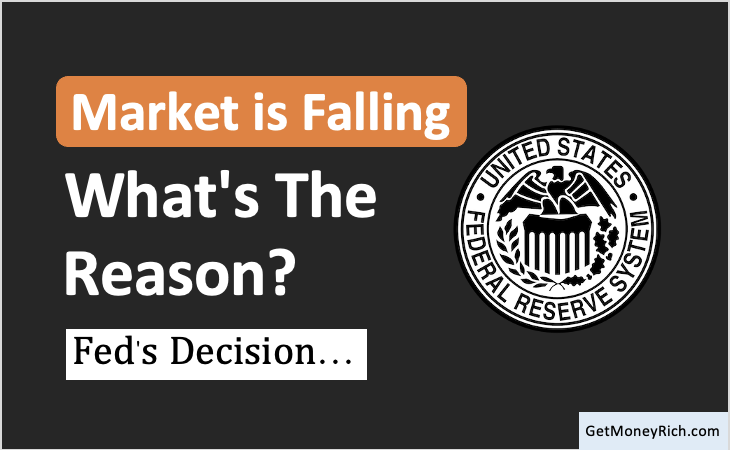Market crashes are scary for investors. They strike fear and uncertainty in the hearts of even the most seasoned investors. These severe declines in market value, which can seem like never-ending, are not easy to comprehend. Such crashes are often triggered by various factors, like market overvaluation, economic cycles, a major geopolitical events (like the Trump factor). Historically, market crashes have led to significant losses, prompting many to question what is the investment strategy during such moments of turmoil.
In times of crisis, having a well-thought-out survival plan is crucial. This blog post aims to equip you with the knowledge and tools necessary to navigate the choppy waters of a market crash. By understanding the nature of these downturns and implementing proactive strategies, you can not only survive but potentially thrive in the face of adversity. Whether you’re a novice investor or a seasoned pro, preparing for market fluctuations is essential for safeguarding your financial future. Let’s delve into how you can effectively weather the storm when the markets take a nosedive.
Table of Contents
1. Understanding Market Crashes
To effectively navigate a market crash, it’s essential to first understand what it is and the factors that contribute to such dramatic declines in market value.
1.1 Definition of a Market Crash
A market crash is typically defined as a rapid and significant decline in the prices of securities, often exceeding 10% within a short period. This sharp downturn can lead to a widespread panic among investors.
Market crashes are characterized by their suddenness. Unlike normal market corrections, which are typically gradual and can be seen as healthy adjustments within an upward trend, crashes occur unexpectedly and can lead to a loss of confidence in the financial system. This loss of confidence can create a vicious cycle where falling prices trigger more selling, further exacerbating the decline.
The psychological aspect of a market crash cannot be underestimated. Fear and uncertainty can cloud judgment, causing even rational investors to make impulsive decisions that may not align with their long-term goals.
Historical data shows that market crashes are often followed by periods of recovery. While the immediate effects can be devastating, markets have historically rebounded over time.
1.2 Common Causes of Market Crashes
Market crashes can be triggered by a variety of factors, including:
- Economic Indicators: Poor economic data, such as rising unemployment rates or declining GDP, can signal trouble ahead and lead to investor panic. A slowdown in industrial production, weak consumer spending, or high inflation can further dampen market sentiment. A sustained weakness can make investors rush to sell stocks causing a crash.
- Geopolitical Events: Political instability, wars, or international conflicts can create uncertainty in the markets, prompting sell-offs. Trade wars, sudden regulatory changes, or economic sanctions can also disrupt global supply chains. These factors can affect profits and investor confidence, ultimately causing sharp declines in stock prices.
- Speculation and Bubbles: Markets driven by speculation may inflate asset prices beyond their intrinsic value. When reality sets in, it can lead to a rapid correction. Excessive leverage, herd mentality, and irrational exuberance often fuel bubbles. But when sentiment shifts, panic selling follows, causing steep market declines and financial losses.
- Financial Crises: Banking failures or credit crises can undermine confidence in the financial system, leading to widespread selling. Liquidity shortages, excessive corporate debt, or the collapse of major financial institutions can trigger systemic risks. It can create a domino effect that spreads fear across global markets and results in sharp sell-offs.
1.3 Historical Examples and Their Impacts on Investors
Understanding past market crashes provides valuable insights into their causes, severity, and long-term impacts. History has shown that market crashes can erase years of gains in a matter of days. It can leave unprepared investors in financial distress.
One of the most devastating crashes was the Great Depression of 1929, which began with a dramatic stock market collapse in October. This event wiped out fortunes overnight, led to mass unemployment, and triggered a global economic downturn that lasted a decade. Many investors, especially those who had borrowed heavily to invest, faced financial ruin as stock prices plummeted by nearly 90% over the next few years.
Another major crash was the Dot-Com Bubble of 2000, which was fueled by excessive speculation in internet-based companies. Many tech stocks, once valued at unsustainable levels, collapsed when investors realized these companies had little to no profitability. The Nasdaq index lost nearly 78% of its value. Countless retail investors saw their portfolios decimated.
More recently, the 2008 Financial Crisis, triggered by the collapse of the housing market and excessive risk-taking in mortgage-backed securities, caused a global recession. Major financial institutions failed, markets crashed, and millions lost jobs.
By examining these historical events, investors can better appreciate the volatility of markets and the importance of having a robust strategy in place. Understanding the underlying causes and consequences of market crashes is crucial for developing effective responses when they occur.
2. Strategies During a Market Crash
When a market crash hits, the natural reaction is often fear and panic. Watching stock prices plunge can be overwhelming, making it tempting to sell-off the holdings to minimize losses.
However, history has shown that those who remain patient are often the ones who emerge stronger. Instead of reacting emotionally, investors should use a market downturn as an opportunity to strengthen their portfolios.
Let’s learn more about it.
2.1 Stay Calm
Maintaining composure during a market crash is easier said than done, but it is crucial for making rational decisions.
Market downturns are a natural part of the economic cycle, and they have always been followed by recoveries. The worst investment choices are often made in moments of panic. Selling in distress, switching to cash, or abandoning long-term plans can lock in losses that could have been avoided.
It is during these times that an investor’s mindset is truly tested.
When the news is filled with negative headlines and fear dominates the market, take a step back and remind yourself of your long-term investment objectives.
Turn off the noise, avoid obsessively checking your portfolio, and focus on fundamentals rather than short-term volatility. Just as staying calm is critical when analyzing stocks, it becomes even more essential during a crash.
2.2 Avoid Panic Selling
One of the biggest mistakes investors make during a downturn is selling in panic, often at the worst possible time.
When prices fall sharply, emotions take over, and many investors instinctively rush to sell, fearing further losses. However, history has shown that markets eventually recover. Panic selling often results in missing the rebound.
Selling in a downturn effectively locks in losses, removing any chance of benefiting from the eventual upswing.
A better approach is to delay any major decisions. If the urge to sell is overwhelming, tell yourself to wait for two to three months and reassess once the dust settles.
Often, by the time markets show signs of recovery, investors who held on find themselves in a much better position.
Another way to strengthen your ability to hold through downturns is by investing in fundamentally strong companies rather than speculative stocks. High-quality businesses with strong balance sheets, stable cash flows, and competitive advantages are more likely to recover after a crash.
2.3 Reassess Your Portfolio
A market crash presents a rare opportunity to review and make necessary adjustments. Rather than reacting impulsively, use this time to evaluate your portfolio’s overall health.
- Start by identifying which stocks have held up well and which have significantly declined. Are your underperforming assets temporary victims of market sentiment, or do they indicate deeper financial weaknesses?
- Review whether your asset allocation still aligns with your risk tolerance and financial goals. If your portfolio is too concentrated in risky assets, consider rebalancing by increasing exposure to defensive stocks or fundamentally stronger stocks.
- Market downturns can also be a great time to buy high-quality stocks at discounted prices. Many fundamentally strong companies see their stock prices decline along with the broader market, offering long-term investors a chance to accumulate shares at attractive valuations.
Instead of seeing a crash as a threat, view it as an opportunity to strengthen your holdings and position yourself for future growth.
3. Investment Opportunities in a Market Crash
A market crash, while unsettling, can present rare investment opportunities for those who remain prepared and think long-term. Instead of focusing on short-term losses, prepared investors see downturns as a chance to acquire quality assets at lower prices.
Here are some key strategies to capitalize on potential gains during a market crash.
3.1 Buying the Dip – But with Caution
“Buying the dip” refers to purchasing stocks after a significant decline. The purchasing is done with the expectation that they will recover over time. However, not every stock that falls is worth buying. To execute this strategy effectively, here are my two cents. It will tell you, which type of stocks to buy during a market crash
- Strong Companies: Focus on businesses with strong financials, competitive advantages, and sustainable cash flows. Avoid highly leveraged (debt dependent) or speculative stocks.
- Check Valuations: A price drop doesn’t always mean a stock is cheap. Use valuation metrics like P/E ratio, P/B ratio, and discounted cash flow analysis to confirm if the stock is truly undervalued.
- Use a Staggered Approach: Instead of investing all at once, consider rupee-cost averaging – investing fixed amounts at regular intervals to reduce timing risks.
- Maintain Liquidity: Keep some cash reserves ready to take advantage of further dips without overexposing yourself to a single downturn.
3.2 Investing in Defensive Stocks
During economic uncertainty, certain sectors tend to perform better due to their non-cyclical nature. Defensive stocks belong to industries that provide essential goods and services, making them more resilient in downturns. Key sectors include:
- Consumer Staples: Companies producing food, beverages, and household goods (e.g., Hindustan Unilever, Nestle India, Britannia).
- Utilities: Firms providing electricity, water, and natural gas that remain in demand regardless of economic conditions.
- Healthcare & Pharmaceuticals: Businesses in the medical and pharmaceutical sectors tend to see steady demand (e.g., Sun Pharma, Dr. Reddy’s).
Defensive stocks may not provide extraordinary returns, but they offer stability and steady dividends.
3.3 Exploring Alternative Investments
Diversification is key to surviving a market crash. Alternative investments can reduce overall portfolio risk by providing non-correlated returns. Consider these options:
- Bonds: Government and high-quality corporate bonds provide stable returns and act as safe havens in turbulent markets.
- Gold & Commodities: Precious metals, particularly gold, have historically been a hedge against inflation and market downturns.
- Real Estate: Real estate investments, either through direct property ownership or Real Estate Investment Trusts (REITs), can offer rental income and long-term appreciation.
By spreading investments across different asset classes, you improve portfolio resilience against prolonged market volatility.
4. Post-Crash Recovery
Surviving a stock market crash is one thing, thriving after it is another. Once the market stabilizes, the focus should shift to recovery and building long-term financially resilient portfolio. This phase is an opportunity to reassess your approach, learn from past mistakes, and prepare for future volatility.
4.1 Reevaluating Your Investment Approach
A market crash can be a harsh but valuable teacher. The first step in post-crash recovery is analyzing how your portfolio performed and identifying areas for improvement. Ask these questions to yourself:
- Did you panic and sell at the worst time?
- Did you hold onto weak stocks hoping for a rebound?
Understanding your reactions can help refine your strategy.
If the crash exposed flaws in your portfolio, consider making adjustments. This may involve diversifying better by spreading money across various asset class (like in gold, real estate, deposits, etc) instead of only in stocks.
It may also ask for strengthening the allocations by including more stocks from the defensive sectors.
No matter what ever is your understanding about the portfolio, one theme that always works is “prioritizing companies with solid fundamentals”. It will never let you down. Always avoid stocks of weak companies no matter how bullish is their trends.
4.2 Staying Committed to the Long-Term
History has shown that markets tend to recover, often reaching new highs after periods of downturn.
Those who stay invested and continue to buy quality assets at reasonable valuations tend to benefit the most in the long run. Instead of trying to chase quick rebounds, focus on businesses with strong earnings, sustainable growth, and healthy balance sheets.
It’s also important to maintain a disciplined investment approach. If you followed a systematic investment plan (SIP) before the crash, continue with it.
If you were sitting on cash, consider deploying it gradually rather than making large one-time investments. Suggested Reading: Importance of time in the market vs timing the market.
4.3 Building Knowledge and Financial Discipline
A crash is a reminder that markets are unpredictable, and continuous learning is essential.
Take the time to understand economic trends, company fundamentals, and valuation metrics. Expanding your knowledge will not only improve your investment decisions but also help you remain confident in your strategies during future downturns.
Beyond education, financial discipline plays a crucial role in post-crash recovery. Avoid excessive risk-taking in the hope of making up for losses quickly. Stick to sound investment principles, maintain emergency funds, and ensure your portfolio aligns with your long-term financial goals.
A market crash is not the end—it’s a reset. It forces investors to reassess, refine, and reinforce their strategies. By staying focused on fundamentals, maintaining a long-term outlook, and continuously improving financial knowledge, you can emerge stronger and more prepared for the next market cycle. The key is to view setbacks as learning experiences, not as reasons to abandon your investment journey.
Conclusion
A market crash can be one of the most challenging experiences for investors. But it is also an opportunity for growth and learning.
Real money can be made in a market crash. People who stay invested during the crash will survive it for sure. People who will invest more, instead of panic-selling, will become richer in times to come. But those people, who know that stock market crashs are like an opportunity of lifetime, will go all out and invest heavily during such times. These are people who eventually become crorepatis when the market recovers.
Have a happy investing.






